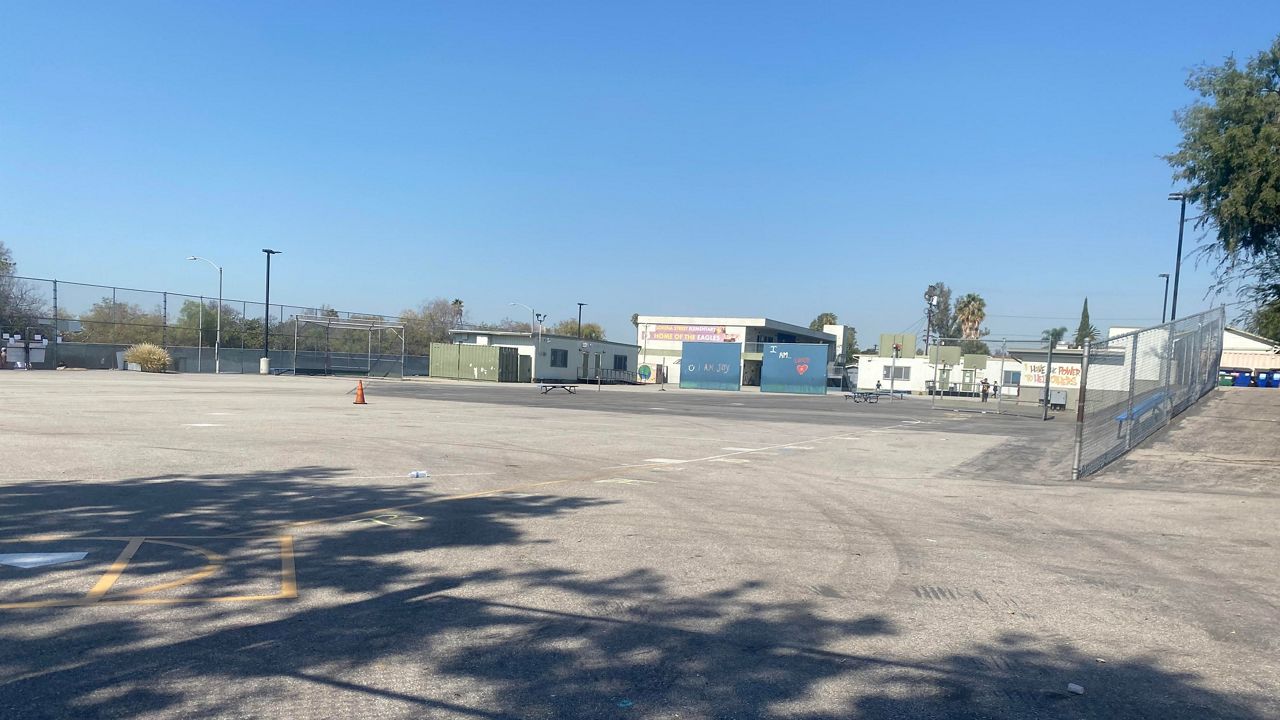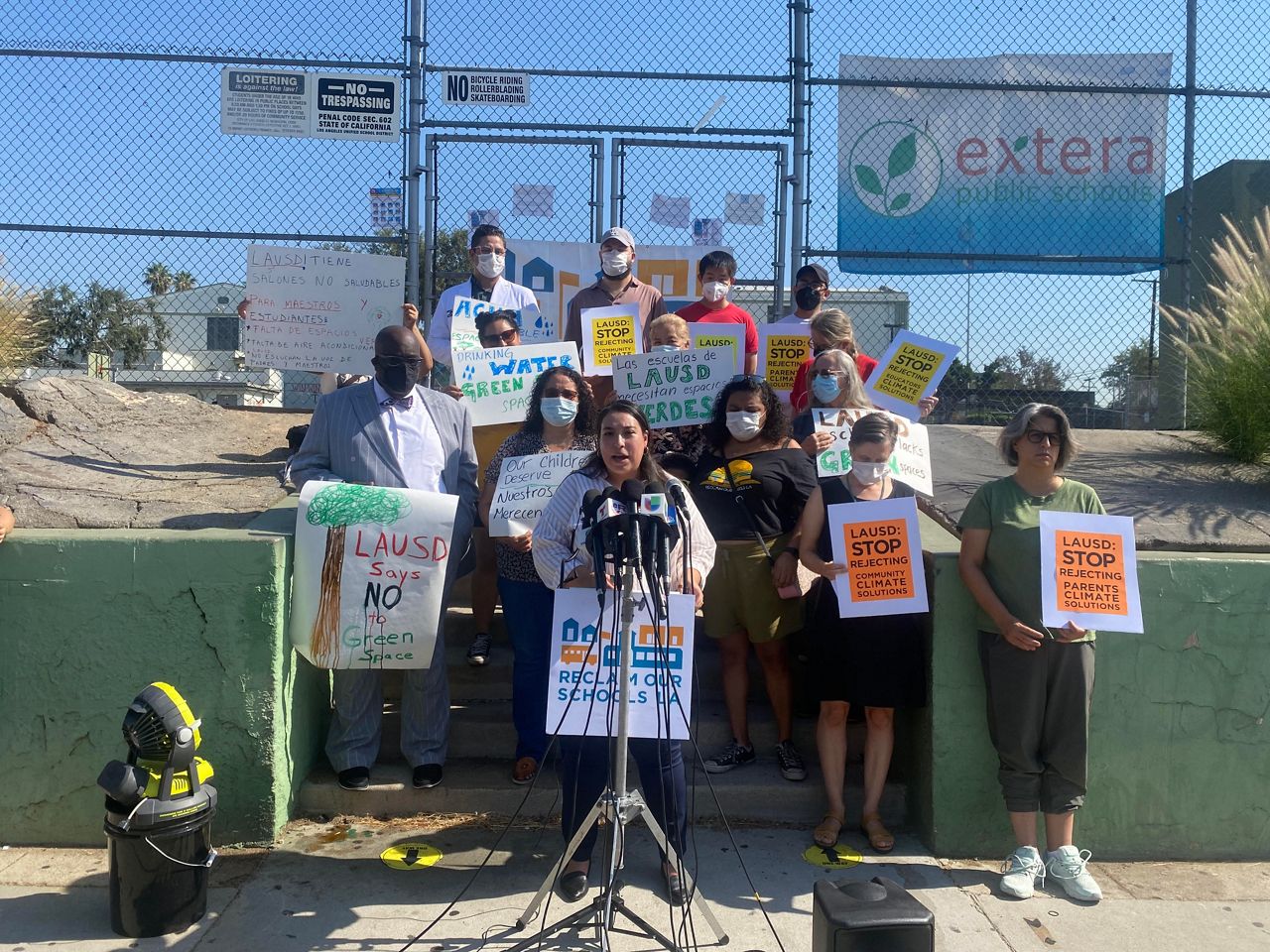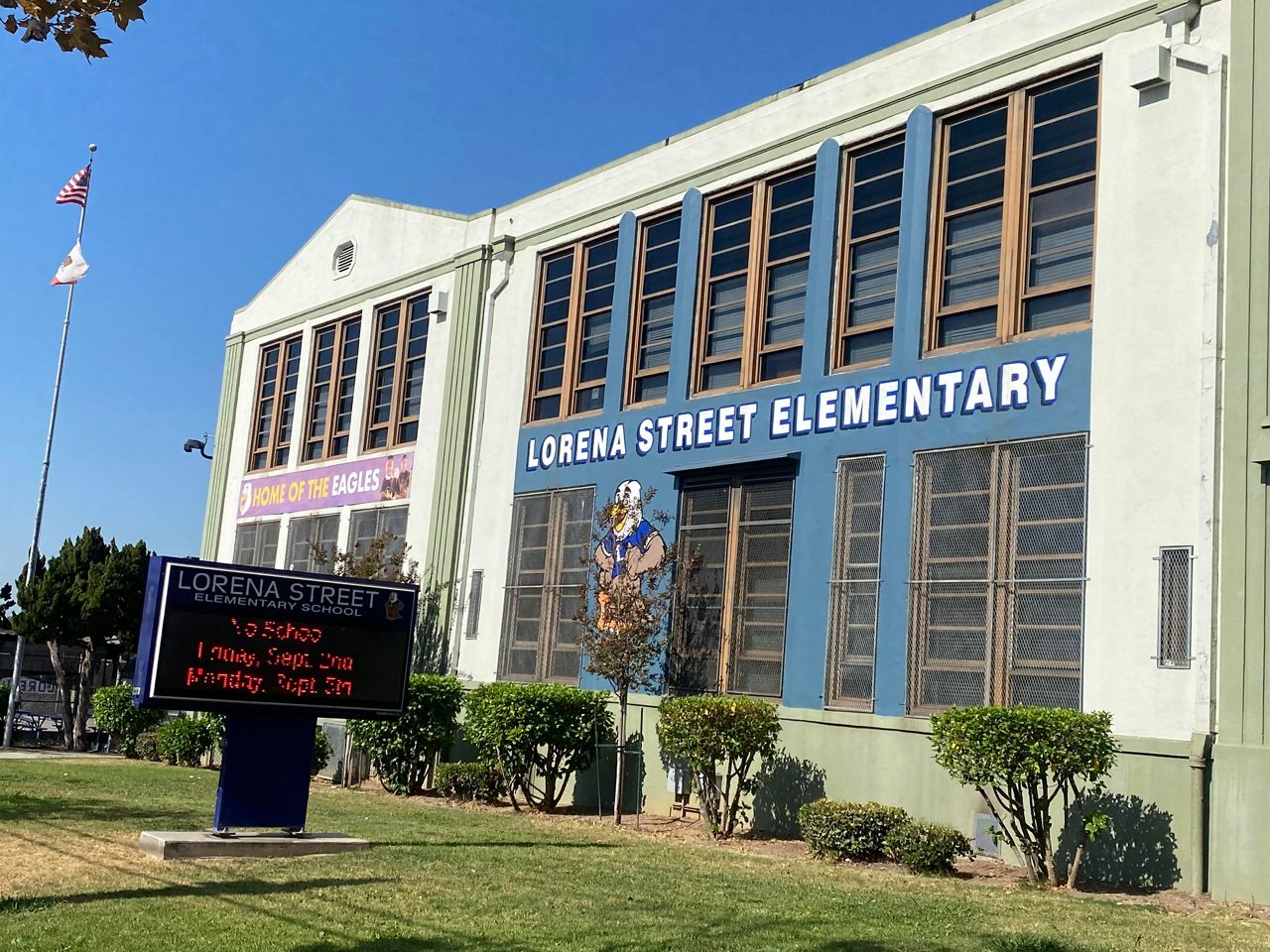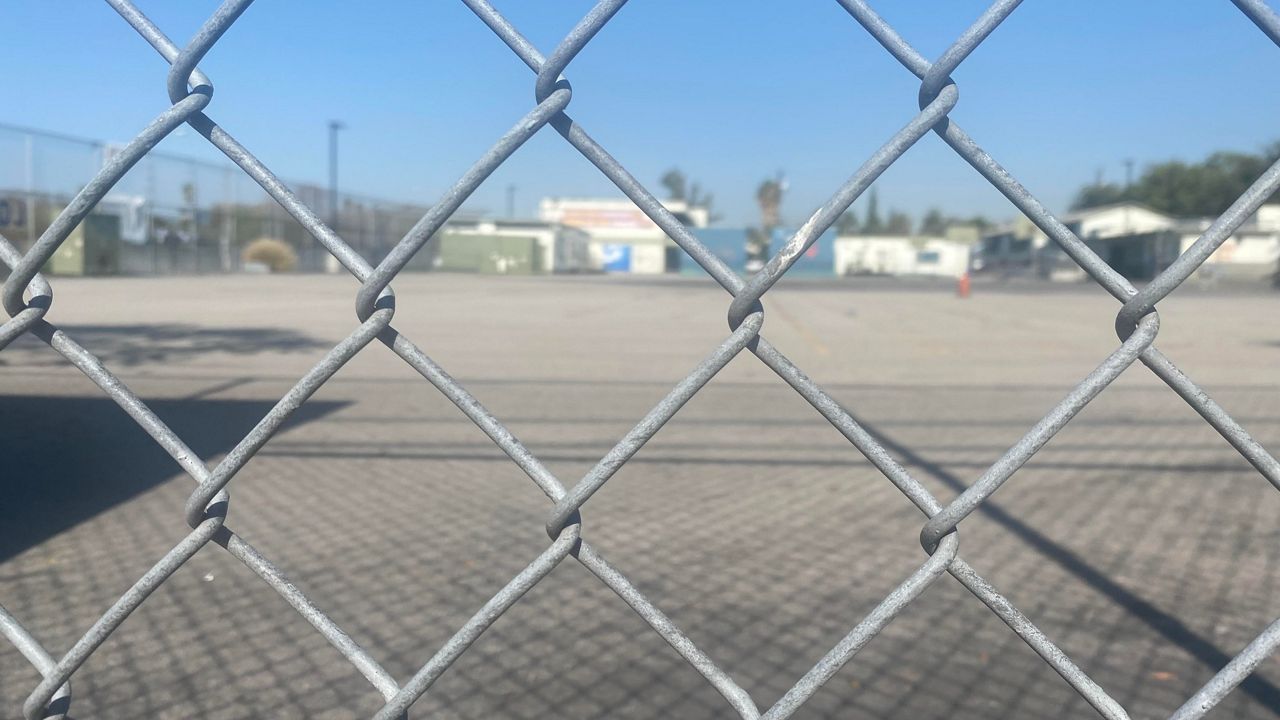BOYLE HEIGHTS, Calif. — As the sun bore down on the blacktop Wednesday, a group of parents, educators and community members gathered outside the playground of a Boyle Heights elementary school to protest the lack of shade, water and green space on LA Unified School District campuses. Like many other schoolyards around the city, just 5% of Lorena Street Elementary is green space, according to the district’s Greening Index. The rest is concrete and asphalt.
“If you think about what it feels like to be in a parking lot on a hot day with the heat melting the soles of your shoes, that is what school kids around Los Angeles experience every day at recess, PE and after school and what parents see every day when they pick up their kids with their faces beat red, drained from the heat of the day,” LAUSD parent and activist Aleigh Lewis said Wednesday.

Lewis was speaking during a protest that called out LAUSD for rejecting a climate justice plan known as the UTLA Beyond Recovery Platform crafted by the United Teachers LA union in partnership with educational stakeholders. The climate plan calls for healthy green public schools, including asphalt removal, shade tree planting and the installation of solar panels on every LAUSD building.
“Playgrounds are some of the hottest places in Black and Brown communities because of the Heat Island Effect combined with the asphalt of the playground,” said primary care physician and Committee of Interns and Residents President Dr. Lorenzo Gonzalez. “This is alarming, as children are among the most vulnerable to heat-related illnesses.”

Lewis and Gonzalez are members of Reclaim Our Schools LA — a coalition of parents, educators, students and community members working to improve public education for LA students. They say schools lacking green space have a negative impact on students’ ability to learn, play and stay healthy, and are calling on LAUSD, as the largest single landowner and consumer of energy in the city, to urgently address the climate crisis in its schools.
On Tuesday, when temperatures exceeded 100 degrees in many parts of the city, LAUSD issued a statement on its efforts to mitigate heat on its campuses. Calling on local, state and federal elected officials to prioritize greening infrastructure investments and develop climate change solutions, the district said it has invested hundreds of millions of dollars in creating green spaces with sustainable features.

LAUSD is “working to accelerate campus greening for students who lack access to the benefits of green spaces,” the statement said, and has “developed a first-ever Greening Index that assigns a green score to help identify which schools are most in need of greening resources.”
The statement said LA Unified is also identifying $50 million in projects to create outdoor learning spaces with landscaping and greening upgrades and is collaborating with nonprofits, grant organizations and public agencies to pursue third-party funding for schools with the greatest need for greening.
Pointing to the greening of Esperanza Elementary school in Westlake as an example, LAUSD said it partnered with the LA Neighborhood Land Trust, California Natural Resources Agency, Kaiser Permanente and NBA Cares to transform the school with outdoor classrooms, shade trees and asphalt removal.
Esperanza Elementary is one of more than 1,000 schools in a district that serves about 540,000 students.
“LAUSD has been unprepared to address LA’s crushing heatwave,” said Reclaim Our Schools LA Co-Executive Director Arelia Valdivia. “The district admits that they’re scrambling in emergency mode and settling for temporary fixes. But the district can’t fight the climate crisis with piecemeal projects and public donations.
“LAUSD must stop rejecting the climate justice plans developed by parents, students and community members if they ever want to improve our schools,” she said. “By dismissing comprehensive, common-sense solutions to these climate challenges, the district continues to put the health and learning environments of our students at risk.”



